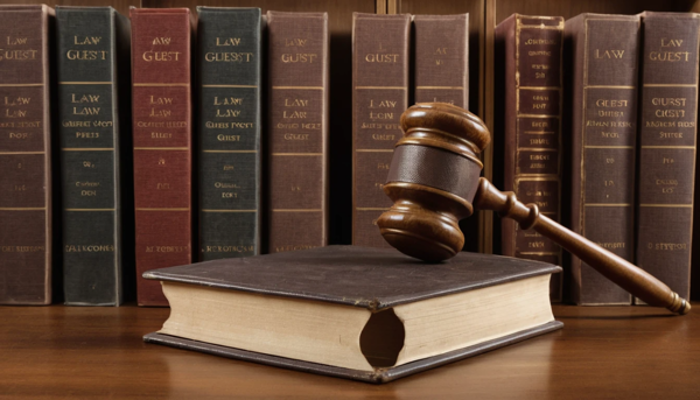
Learn how to file for Chapter 7 bankruptcy quickly and confidently. Our simple, step-by-step guide helps you regain financial freedom today.
Filing for Chapter 7 bankruptcy can give you a fresh financial start. This guide walks you through the process step by step, including eligibility, required documents, costs, and what to expect during and after filing.
How To File For Chapter 7 Bankruptcy 💼
Are you drowning in debt and wondering if there’s a way out? Filing for Chapter 7 bankruptcy might feel overwhelming, but it’s a legal tool designed to help you reset your finances. With the right guidance, you can protect your assets, discharge most debts, and start fresh.
Chapter 7 bankruptcy allows individuals to eliminate unsecured debts like credit cards, medical bills, and personal loans. It’s often the fastest form of bankruptcy, usually taking 3–6 months from filing to discharge. Below, we’ll break it down in simple steps so you know exactly what to do.
Understanding Chapter 7 Bankruptcy 🏛️
Chapter 7 bankruptcy is often called “liquidation bankruptcy.” The court may sell non-exempt assets to pay creditors, though most filers keep everything they need.
It’s ideal for people with low income, high debt, or who don’t have the means to create a repayment plan. While it impacts your credit score, it gives a clean slate and relief from creditor harassment.
Who Is Eligible For Chapter 7 Bankruptcy? ✅
Not everyone qualifies for Chapter 7. Courts require a means test, which compares your income to your state’s median.
- Step 1: Calculate your average monthly income over the past six months.
- Step 2: Compare it to the median income in your state.
- Step 3: If your income is below the median, you likely qualify.
High earners might still qualify if their disposable income after necessary expenses is low enough.
Common Debts That Can Be Discharged 💳
Chapter 7 can eliminate many debts, but not all. Understanding this helps you plan wisely.
Dischargeable debts include:
- Credit card balances
- Medical bills
- Personal loans
- Utility bills
- Certain business debts
Non-dischargeable debts include:
- Student loans
- Child support
- Alimony
- Certain taxes
💡 Tip: Make a complete list of all debts before filing to avoid surprises.
Debts That Cannot Be Cleared ❌
Some debts survive Chapter 7. Knowing these protects you from false expectations.
- Federal and state taxes within certain years
- Court fines and penalties
- Debts from fraud or malicious acts
- Child support or alimony obligations
Understanding which debts remain helps you plan repayment after bankruptcy.
Gathering Required Documents 📑
Organization is key when filing. Courts need proof of income, assets, and debts.
Essential documents include:
- Pay stubs from the last 6 months
- Tax returns for the last 2 years
- Bank statements
- List of all creditors and debts
- Property deeds and vehicle titles
Having everything ready reduces delays and ensures a smooth filing process.
Completing The Means Test 📊
The means test ensures only those who genuinely need Chapter 7 relief qualify.
- Calculate monthly income and subtract allowed expenses.
- Compare disposable income to your state threshold.
- If below the limit, you qualify; if above, you may need Chapter 13 instead.
| Monthly Income | Allowed Expenses | Disposable Income | Eligible? |
| $3,500 | $2,200 | $1,300 | Maybe |
| $2,800 | $1,900 | $900 | Yes |
Choosing The Right Attorney 🧑⚖️
While you can file on your own, a bankruptcy attorney simplifies the process and avoids mistakes.
- They handle complex paperwork
- Advise on exemptions
- Negotiate with creditors if needed
- Represent you in court
💡 Tip: Look for a local attorney with positive reviews and flat-rate fees.
Filing The Bankruptcy Petition 🖋️
Filing officially starts the process. It includes submitting:
- Petition forms
- Schedules of assets and debts
- Statement of financial affairs
- Means test results
Once filed, an automatic stay stops most creditor actions immediately. This provides relief from collection calls, lawsuits, and wage garnishments.
Paying The Filing Fee 💰
Filing Chapter 7 comes with fees. In 2025, the standard filing fee is around $338, but fee waivers are available for low-income filers.
- Fee can be paid in installments
- Waiver requests require proof of income
- Some attorneys offer payment plans
💡 Tip: Don’t delay filing because of the fee; courts can assist with options.
The 341 Meeting Of Creditors 🗓️
Also called the “creditors’ meeting,” it’s usually brief and non-intimidating.
- A trustee asks questions about your finances
- Creditors may attend but rarely speak
- You must answer honestly under oath
Preparation ensures a smooth meeting and avoids delays in discharge.
Understanding Exempt Assets 🏠
Exemptions protect essential property. They vary by state.
Common exemptions include:
- Primary residence (up to a certain value)
- Personal belongings and household items
- Retirement accounts
- Vehicle (one per household in many states)
Non-exempt assets may be sold to pay creditors, but most filers keep what they need.
What Happens After Filing ⏳
Once filed, you may feel relief almost immediately. Creditors cannot contact you for discharged debts.
- Automatic stay prevents collections
- Trustee reviews documents
- Any non-exempt assets may be sold
Most cases conclude in 3–6 months, with a discharge order wiping out qualifying debts.
Rebuilding Credit After Chapter 7 📈
Bankruptcy doesn’t end your financial life—it’s a reset.
Steps to rebuild credit:
- Open a secured credit card
- Make all payments on time
- Monitor your credit report
- Avoid taking excessive new debt
Consistency is key to regaining a strong credit profile.
| Step | Action | Impact |
| 1 | Secured Credit Card | Builds payment history |
| 2 | Timely Bill Payments | Improves credit score |
| 3 | Monitor Credit | Avoid errors or fraud |
Mistakes To Avoid During Filing ⚠️
Many people make avoidable mistakes that delay or complicate the process.
- Failing to list all debts
- Hiding assets or income
- Ignoring court deadlines
- Not attending the 341 meeting
Being honest and organized keeps your bankruptcy on track.
Cost Considerations And Budgeting 💵
Filing isn’t free, so budgeting ahead helps.
- Filing fees: ~$338
- Attorney fees: $1,000–$2,500 (average)
- Credit counseling fees: $20–$50
- Post-filing financial management
Budgeting prevents stress and surprises during the process.
Life After Chapter 7 Bankruptcy 🌟
A fresh start is possible, but planning matters.
- Keep up with essential bills
- Save an emergency fund
- Avoid high-risk debt immediately
- Focus on rebuilding credit and financial habits
Many people report feeling relieved and motivated after completing Chapter 7.
Helpful Tips For A Smooth Filing ✨
- Be organized and honest
- Take required credit counseling seriously
- Keep communication open with your attorney
- Use spreadsheets or apps to track debts and assets
- Start rebuilding financial habits immediately
| Tip | Benefit |
| Organize documents | Avoid delays |
| Attend credit counseling | Meet legal requirements |
| Track expenses | Plan better post-bankruptcy |
Conclusion
Filing for Chapter 7 bankruptcy is a powerful tool for regaining financial freedom. By understanding eligibility, gathering required documents, completing the means test, and working with a qualified attorney, you can navigate the process confidently. Remember to protect exempt assets, attend the 341 meeting, and take steps to rebuild credit afterward. With preparation and honesty, Chapter 7 offers a true fresh start.

FAQs
- How long does Chapter 7 bankruptcy take to file?
Most cases take 3–6 months from filing to discharge. Preparation and attorney guidance can speed this up. - Can I keep my house after Chapter 7?
Yes, if your home falls under your state’s exemption limits. Otherwise, non-exempt portions may be sold. - Will Chapter 7 erase all my debts?
It clears most unsecured debts, but student loans, taxes, and child support usually remain. - Do I need a lawyer to file Chapter 7?
Not required, but an attorney helps avoid mistakes and delays. DIY filing is possible but risky. - How can I rebuild credit after bankruptcy?
Open a secured credit card, pay bills on time, and monitor credit reports. Consistency restores credit over time.
